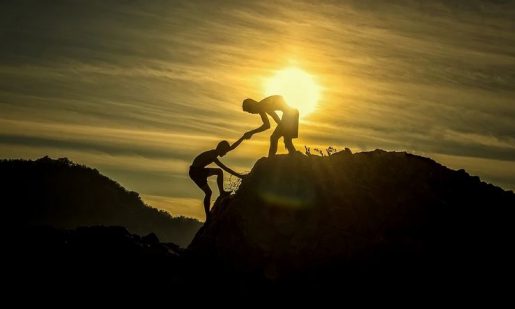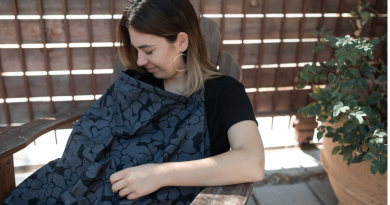How we got here: The origin and function of friendship
Editor’s note: This is the first post in a three-part series on friendship.
Why do humans across many cultures value and celebrate friendship? In many Asian countries, people celebrate World Friendship Day (July 30) by giving cards, flowers or small gifts. Friendship bracelets, a popular token of affection between friends around the world, can be traced back to ancient China.
Clasping hands and interlocking hearts are popular symbols of close friendship, and we fondly recall famous friends: David and Jonathan, and Ruth and Naomi from the Bible, Tom Sawyer and Huck Finn, and the Golden Girls – Dorothy, Blanche, Rose and Sophia. What is the function of close friendship that makes it so important?
C. S. Lewis poetically remarked that friendship had no survival value, although it added to survival. Lewis was only half right. Quite possibly, our strong desire for close friends evolved among our early ancestors because having a close friend improved one’s chances of survival and the survival of one’s children.
In part, we make friends because we don’t want to be alone, and that’s a proximate cause. We want a helpmate and a companion who makes us feel valued. We want someone to love us, despite our faults, and defend us when maligned. Close friends help us navigate the stormy seas of life and comfort us when we fail. Close friends make us feel better.
In a study of 323,000 people across 99 countries, friendship was linked to better health, greater happiness, and a higher level of well-being. If close, loving friendships are an adaptive trait that evolved among early humans, we should expect that close friendships are common and valued across cultures.
Evolutionists view cooperative alliances as generally adaptive and sometimes more than reciprocal cooperation. Close friendships in particular are often unequal in many ways. Friendships are special, cooperative relationships defined by liking and affection. Attraction and love compel close friends to prefer togetherness and to signify the special bond with gifts or vows of commitment.
If adaptive, close friendships should be a thread running through early civilizations and among contemporary hunter-gatherers. In my recent book, I describe dozens of early human cultures and more than 50 contemporary hunter-gatherer and recently pastoral societies that have traditions of close, loving, male friendships — sometimes called “blood brothers” or “adoptive brothers.” 
Blood brotherhoods are common among hunter-gatherer societies and early warrior societies, often involving an exchange of blood or vows. Among the Akwe-Shavante, indigenous people of western Brazil, parents encourage their sons to develop one or two close friends, their i-amo (“my other” or “my partner”), who become their companion for life. Among the Bangwa of Cameroon, a diverse group of farmers, traders and hunters, when a man dies, his best friend pays for the funeral and receives the community’s sympathies, not the family.
In modern, Western life, men are often casual about friendship, but may still refer to their best friend as “like a brother.” Modern friendships also carry fewer formal obligations. A man’s best friend hosts a bachelor’s party and stands beside him during the marriage ceremony, but that’s about it.
Anthropologist Lionel Tiger, one of the first to explore male bonding and men’s desire for male company, noted that men prefer to be together because male bonding is an ancient adaptive trait. The idea of female bonding is less articulated, even though sociologists view women as more social than men.
Male anthropologists and sociologists who study contemporary hunter-gatherer societies have mostly focused on the lives of men, although there is little reason to believe that early women had no close friendships.
In this four-part blog series based on my new book, The Evolution of Human Pair-Bonding, Friendship, and Sexual Attraction: Love Bonds, I explore how close friendships may have evolved among early human hunter-gatherers. Close friendships may have aided survival within mostly gender-separated social environments.
Through close same-gender friendships, early men and women acquired the resources to gain a mate and raise their children to reproductive age. I will show evidence of close friendships across cultures and throughout history. While the expression of friendship differs across cultures, close loving friendships are quite common, suggesting an underlying evolutionary trait.
Understanding the ancient origins of close friendships reveals the central role of friendship in human evolution. In part two of this series, I will look at the evolutionary context in which close friendship emerged.
-By Michael R. Kauth, Ph.D., professor, Menninger Department of Psychiatry and Behavioral Sciences at Baylor College of Medicine



